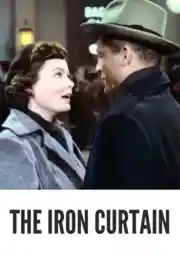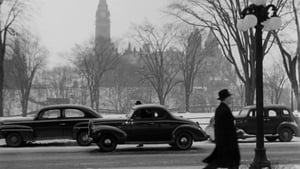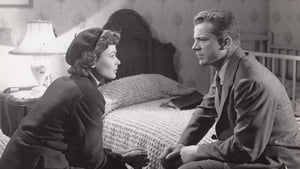Contact: [email protected]
Video Sources 0 Views

The Iron Curtain Colorized 1948: Revitalizing Best Cold War Cinema
Synopsis
[ez-toc]




Introduction
In the vast landscape of cinematic history, certain gems from the past continue to captivate audiences despite the passage of time. One such classic is “The Iron Curtain Colorized” (1948), a gripping tale set against the backdrop of Cold War tensions. However, what makes this film even more intriguing today is its recent transformation – a color makeover that breathes new life into the black-and-white masterpiece. In this article, we delve into the historical context, explore the film’s details and production, discuss the significance of colorizing old movies, analyze the techniques employed in this process, and ultimately, reconsider the impact of “The Iron Curtain Colorized” in its colorized form.
Read Media File Transfer Agreement: Terms and Conditions
Read FAQ
The Iron Curtain Colorized (1948) and Its Historical Context
To truly appreciate “The Iron Curtain Colorized,” one must first understand the historical milieu in which it unfolds. The film is a product of its time, released in the aftermath of the 1948 Czechoslovak coup d’état. This pivotal event marked the Communist Party of Czechoslovakia’s rise to power, ushering in an era that became synonymous with the Iron Curtain, dividing Eastern and Western Europe. The film mirrors the anxieties and geopolitical complexities of the Cold War, providing a lens through which audiences could grapple with the ideological struggles and espionage of the era.
Exploring The Iron Curtain Colorized (1948): Film Details, Production, and Inspiration
“The Iron Curtain Colorized” weaves a tale of espionage and intrigue, with Dana Andrews taking on the lead role inspired by real-life events. The film draws inspiration from the memoirs of Igor Gouzenko, a Soviet cipher clerk who defected to Canada, revealing crucial information about Soviet spy activities. The stellar cast, including Gene Tierney, adds depth to the narrative, making the film a classic in its own right.
The production of “The Iron Curtain Colorized” was a collaborative effort involving 20th Century Fox. The studio’s commitment to historical accuracy and engaging storytelling shines through in the film’s meticulous production design and gripping narrative. The connection to Gouzenko’s memoirs adds an authentic layer to the storytelling, blurring the lines between fiction and reality.
The Significance of Colorizing Old Movies
In the ever-evolving world of cinema, the question of preserving and revitalizing old films is a constant debate. Colorization, the process of adding color to black-and-white films, has been a controversial method used to breathe new life into classics. The significance lies in introducing these timeless stories to newer generations who might shy away from black-and-white aesthetics.
The advantages of colorization are evident in the enhanced visual experience it offers. It allows audiences to connect more deeply with characters and settings, providing a fresh perspective on the narrative. However, purists argue that tampering with the original black-and-white format compromises the artistic integrity of the film.
Techniques Used in Colorizing Films: From Black-and-White to Color
Colorizing old movies involves various techniques, each with its unique approach and impact. The most common methods include digital colorization, which utilizes computer algorithms to assign colors to different elements, and hand coloring, a labor-intensive process where artists meticulously add color frame by frame. Both methods aim to preserve the authenticity of the original while adding a contemporary flair.
The Color Makeover of The Iron Curtain Colorized (1948)
The decision to colorize “The Iron Curtain Colorized” stems from a desire to make the film more accessible to modern audiences without sacrificing its historical relevance. The color makeover brings vibrancy to the once monochromatic palette, breathing life into the period costumes, settings, and characters. The meticulous process respects the film’s original aesthetic while elevating it to a new level of visual splendor.
Comparing the original black-and-white version with the colorized iteration reveals a nuanced transformation. The colorized version enhances the emotional resonance of key scenes, immersing viewers in the world of post-war espionage with a newfound intensity. It is a testament to the skillful application of colorization techniques that preserves the essence of the film while offering a fresh viewing experience.
Revisiting The Iron Curtain Colorized (1948): From Black-and-White Classic to Colorized Gem
Upon its initial release, “The Iron Curtain Colorized” garnered critical acclaim for its portrayal of Soviet espionage and its timely exploration of Cold War tensions. The film became a benchmark for Hollywood’s treatment of anti-communist narratives, influencing subsequent productions. Its lasting impact on the cinematic landscape is undeniable.
In its colorized form, “The Iron Curtain Colorized” takes on a renewed significance. The visual enhancements amplify the tension and drama, providing contemporary audiences with a visceral experience akin to watching a newly released film. The legacy of “The Iron Curtain Colorized” endures not only as a classic but now as a technicolor gem that bridges the gap between generations.
Preserving Cinematic History: The Debate Over Colorization
While the colorization of old movies breathes new life into classics, it also sparks intense debates within the cinematic community. Purists argue that altering the original artistic intent diminishes the historical and cultural value of these films. On the other hand, proponents believe that colorization is a necessary step to keep these films relevant and accessible to audiences with evolving tastes.
The debate over colorization underscores the broader conversation about preserving cinematic history. Striking a balance between maintaining the authenticity of the original work and introducing it to contemporary audiences is an ongoing challenge faced by filmmakers, historians, and enthusiasts alike.
Famous Examples of Successfully Colorized Films
Despite the controversies, there are instances where colorization has been executed successfully, breathing new life into iconic films. “Gone with the Wind” and “Casablanca” stand as prime examples of this transformation. The color treatments in these films not only respect the source material but also enhance the visual storytelling, inviting a new generation of viewers to appreciate these classics.
Embracing the Past: Appreciating The Iron Curtain (1948) in Its Colorized Form
“The Iron Curtain” in its colorized form invites audiences to appreciate the film from a fresh perspective. It encourages viewers to engage with the narrative in a way that transcends the limitations of the original black-and-white format. Watching both versions – the classic black-and-white and the vibrant colorized edition – allows audiences to embrace the past while acknowledging the evolving nature of storytelling in cinema.
Conclusion
As we reflect on “The Iron Curtain” (1948) and its recent color makeover, the enduring relevance of this cinematic gem becomes apparent. The film not only captures a pivotal moment in history but also serves as a testament to the ever-changing landscape of cinema. The decision to colorize “The Iron Curtain” opens the door to a new chapter in its legacy, ensuring that the film remains a vital part of cinematic history for generations to come. In preserving our cinematic heritage, we find a delicate balance between honoring the past and embracing the future, ensuring that timeless tales continue to captivate audiences across the ages.












